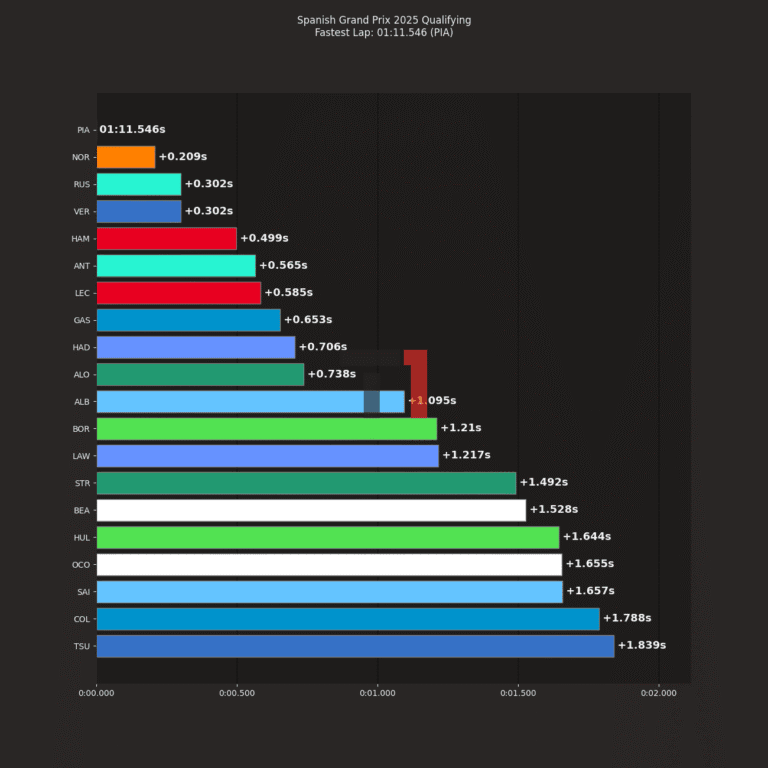Start unlocking the secrets of F1 data today! Use “TELEMETRYGIFT” coupon at the checkout to get your first FREE TOKEN.
Flexible Front Wings from 2025 Bahrain Formula 1 Testing
Pre-season testing in Bahrain has unveiled several technical innovations, but Red Bull’s latest front wing design has attracted particular attention. High-speed footage and detailed images suggest that the team’s wing may exhibit controlled flexing under aerodynamic loads, potentially offering both drag reduction on straights and increased downforce in corners.
Are Teams Exploiting FIA’s Flexi-Wing Regulations?
Flexible wings have long been a contentious topic in F1, with teams continuously pushing the boundaries of FIA’s regulations. During testing, several onboard cameras and high-speed footage indicated notable deformation in front wings under load, suggesting that teams may have found new ways to optimize aerodynamic efficiency.
While the FIA has strict load tests to prevent excessive wing flexing, engineers often design components to pass static tests while still flexing dynamically on track. If these suspicions are confirmed, it could lead to further technical directives or mid-season regulation clarifications.
What Makes Red Bull’s Front Wing Different?
Red Bull has a history of pushing aerodynamic boundaries, and their 2025 front wing appears to continue that trend. The design features:
- Segmented wing elements that may flex subtly under different loads.
- A multi-layered structure that changes its aerodynamic behavior dynamically.
- A nose-to-wing transition that seems optimized for controlled movement rather than complete rigidity.
This combination could allow the wing to behave rigidly under FIA’s static tests while still flexing slightly at high speeds—a tactic teams have used in the past to gain a performance edge.
Could We See Protests or FIA Scrutiny?
If these flexible front wings provide a significant advantage, there’s a strong chance rival teams could lodge protests. The FIA may also conduct additional tests to assess compliance with the regulations. Past seasons have shown that even minor flexibility adjustments can yield substantial performance benefits, making this a potential area of contention.

For more technical breakdowns and F1 insights, visit T1F1.com. Check out our TELEMETRY GENERATOR and follow us on social media for live updates!



